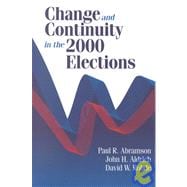
|
viii | ||||
| Preface | xii | ||||
| PART 1 The 2000 Presidential Election | 1 | (66) | |||
|
12 | (19) | |||
|
13 | (4) | |||
|
17 | (6) | |||
|
23 | (2) | |||
|
25 | (2) | |||
|
27 | (4) | |||
|
31 | (15) | |||
|
31 | (2) | |||
|
33 | (3) | |||
|
36 | (2) | |||
|
38 | (5) | |||
|
43 | (3) | |||
|
46 | (21) | |||
|
51 | (2) | |||
|
53 | (3) | |||
|
56 | (5) | |||
|
61 | (2) | |||
|
63 | (4) | |||
| PART 2 Voting Behavior in the 2000 Presidential Election | 67 | (126) | |||
|
71 | (25) | |||
|
71 | (3) | |||
|
74 | (3) | |||
|
77 | (7) | |||
|
84 | (7) | |||
|
91 | (5) | |||
|
96 | (25) | |||
|
97 | (9) | |||
|
106 | (13) | |||
|
119 | (2) | |||
|
121 | (28) | |||
|
122 | (6) | |||
|
128 | (2) | |||
|
130 | (2) | |||
|
132 | (3) | |||
|
135 | (4) | |||
|
139 | (9) | |||
|
148 | (1) | |||
|
149 | (19) | |||
|
150 | (3) | |||
|
153 | (3) | |||
|
156 | (5) | |||
|
161 | (1) | |||
|
161 | (5) | |||
|
166 | (2) | |||
|
168 | (25) | |||
|
168 | (1) | |||
|
169 | (1) | |||
|
170 | (6) | |||
|
176 | (2) | |||
|
178 | (11) | |||
|
189 | (4) | |||
| PART 3 The 2000 Congressional Election | 193 | (58) | |||
|
197 | (40) | |||
|
197 | (11) | |||
|
208 | (11) | |||
|
219 | (7) | |||
|
226 | (11) | |||
|
237 | (14) | |||
|
237 | (4) | |||
|
241 | (1) | |||
|
242 | (2) | |||
|
244 | (1) | |||
|
245 | (2) | |||
|
247 | (2) | |||
|
249 | (2) | |||
| PART 4 The 2000 Elections in Perspective | 251 | (16) | |||
|
255 | (12) | |||
|
259 | (1) | |||
|
260 | (2) | |||
|
262 | (2) | |||
|
264 | (3) | |||
| Notes | 267 | (48) | |||
| Suggested Readings | 315 | (10) | |||
| Index | 325 |
The New copy of this book will include any supplemental materials advertised. Please check the title of the book to determine if it should include any access cards, study guides, lab manuals, CDs, etc.
The Used, Rental and eBook copies of this book are not guaranteed to include any supplemental materials. Typically, only the book itself is included. This is true even if the title states it includes any access cards, study guides, lab manuals, CDs, etc.